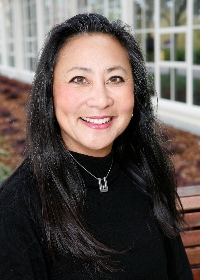MI6 is one of the top gaming marketing conferences in the world, dealing with consumer trends, social and digital marketing, and ideas on the future of gaming. A variety of speakers and sessions will run all day on Thursday, April 7 (be sure to get the “early bird” registration rate here while it’s still available!) We talked with Jonathan Simpson-Bint, CEO of Brand Narrative, and Mary Bihr, Vice President of Global Publishing for LucasArts, about the event, their companies and marketing in general.
What are some of the ways that marketing has evolved in the past 20 years?
Jonathan Simpson-Bint: Twenty years is an almost unfathomably long time in marketing, especially in the last two decades when we’ve seen so much change largely as a result of the ubiquity of technology and -obviously- the internet. Overall, I think marketing has evolved along the same lines as society and culture in general. It’s more democratic now, much more about getting consumers involved as partners in the daily life of the brand.
Mary Bihr: The industry has grown to 24 billion dollars in worldwide game sales from its humble beginnings a little over 20 years ago. Back then, the methods employed in marketing were pretty rudimentary as the audience size and composition were confined to hard core gamers on the PC, and a limited number of console players. Now games are a legitimate form of mass entertainment, and are enjoyed by young and old, male and female, hard core and casual. That translates into a variety of new ways to reach customers. Rather than the simple employment of print media, the media mix balances between print, broadcast, p.r., social media, and various other activities meant to enhance brand engagement with the customers. Marketing becomes a function of not only reaching the customers with a one way message, but establishing a relationship with them through different levels of interaction. The single biggest difference over the years has been the addition of social media.
What do your companies seek to do that’s unique in the marketing space?
Jonathan Simpson-Bint: Brand Narrative’s start point is that every company is a media company now and, that being the case, companies need to focus on how they shape and tell their story across many mediums at once. To us, that means that content is very important . . . and, whether they know it or not, pretty much every company is now producing a lot of content in the form of their own web site, Facebook pages, blogs, Tweets and so on. And not all of this is ‘official’ much of what gets produced about a company and its products is done by employees on their personal blogs, Facebook pages and in Tweets. Plus, of course, there is a wealth of content about companies being created by their customers! Our goal is to make sense for all of this and create a measurable strategy around it.
Mary Bihr: Our marketing department is always looking to innovate in the ways we engage with our customers. The most recent example was a web-based game built into our product Web site which was created to engage our fans in Lego Star Wars III. This was an innovative and unique customer experience that resulted in millions of our fans engaged on the site before the game even launched. There was strong word of mouth, and, what was really unique, was how the customers became our biggest evangelists. Users were posting videos of themselves playing the web based game before the retail version of the game was even available. Community engagement and community support are the best ways to help drive demand and tip the balance between a brand driven solely by the publisher, and a brand endorsed and supported by customer through word of mouth and viral communications.
 Mary Bihr
Mary Bihr
What places do you think that traditional brand methods still have a place?
Jonathan Simpson-Bint: Everywhere. I don’t view it as either/or. All this new stuff works best when it compliments what brands are already doing, when it works in harmony with it. The reality, though, is that there is really not that much integration going on because so many companies have either siloed the two pieces completely or have people in place who aren’t talking to each other. This is what we see a lot. Our take is that it’s not even two separate pieces. Traditional marketing and what I’ll call ‘non-traditional’ marketing methods should work together and come from the same place. The theory, the goals, the opportunities should all match . . . but we get distracted by the platforms.
Mary Bihr: Management of a brand through traditional methods still has a place in many industries. What works within the media mix is dependent upon the demographic a marketer is trying to reach. In the case of videogames, we can employ new and innovative methods because the media consumption of our customers is more diverse than other segments. To a demographic not as versed in emerging technologies and not as engaged in social media, traditional methods work best.
What’s the most important innovation to marketing in the past five years in your mind?
Jonathan Simpson-Bint: I’ll go out on a limb and say that I think it will turn out to be Facebook! Some people will violently disagree on that and others will roll their eyes and say it’s obvious that it’s Facebook . . . But I think Facebook represents a profound game change.
Mary Bihr: Customer engagement through social media. Five years ago, LucasArts didn’t have this in their media mix. Nobody did. Social media is now that part of the mix that can become a tipping point in brand engagement.
How has interactivity and games changed the nature of advertising?
Jonathan Simpson-Bint: I think it’s given a lot of power to consumers and, in some cases, even thrown open the question of who is actually controlling the destiny of the brand. There’s a sort of pull-push dynamic going on between many brands and their consumers where the consumers are running with the brand and taking the lead in the way many millions of other consumers experience it. There’s always been some of this – we used to call them opinion formers – but it’s on an epic, almost unrecognizable scale now. Some brands are simply in the culture. Look at brands like Nike and Apple. You don’t need to see the TV commercials to understand these brands. You don’t need to see anything, in fact. The culture will teach you everything you need to know and turn you in to an acolyte too. Some brands are so powerful that they’re woven in to the fabric of every day and you come to experience and understand their stories purely by osmosis.
Mary Bihr: Our industry can employ some of the most innovative types of advertising to reach our customers because we are in an industry of technology savvy customers. Because of this, the message to our customers isn’t delivered through a one-way mechanism, but through a variety of methods. It’s much less about a one-way communication, and more about ongoing customer engagement. Advertising is now a dialogue with customers, rather than a monologue.
How much do you try and emphasize narratives and dialog with consumers?
 Jonathan Simpson-Bint
Jonathan Simpson-Bint
Jonathan Simpson-Bint: We think the two go hand in hand and that they represent a huge percentage of what matters right now. If your brand doesn’t have story then it’s very hard for it to be propagated by the culture because you’re not being talked about. And this is really important. The important conversation isn’t the one that happens on a brands message board or in a chat room that the brand owns . . . the important conversations are the ones out in the wild. The ones that are a few steps away which you don’t see or hear. Maybe you can get intimations of these conversations from Twitter and Facebook and various social means, but you can’t get the whole thing. It’s hard to truly detect sentiment and even harder to measure some kind of efficacy.
Mary Bihr: That’s exactly what we try to do. The message isn’t so much a linear narrative, but a dialogue with our customers.
What are you anticipating will be learned from this years MI6?
Jonathan Simpson-Bint: We’ve got a great line up of speakers and we’ve tried hard to make sure that everyone is here to give real, actionable advice and guidance. In our planning meetings we talked about this a lot. We want MI6 to be a really practical, hands on kind of conference. We want attendees to go back to work with new ideas in their heads and a clear understanding of how those might apply to them and help them in their work and in their careers.
Mary Bihr: I’m always looking to learn from peers. No one company has all of the answers, but together we can work toward reaching and supporting our customers more effectively and becoming better marketers in an ever-evolving industry. I’m also looking forward to hearing from experts outside of our industry. We can always take each other’s best practices and see how we can improve as a result.
What are the important parts of marketing conferences like MI6 to the marketing community?
Jonathan Simpson-Bint: I don’t think the importance can be overestimated. Interactive entertainment is a major, major industry and there is an extraordinary amount of brilliant and creative work going on within it. We have every right and every need to come together and meet like this and share in the both the knowledge of the speakers and the knowledge that we each possess too.
Mary Bihr: Case studies, reviewing the work of peers, and networking – all good stuff.
Thanks to both of you.
_ _
Are you going to MI6 Have an opinion about marketing  Join the discussion at Facebook!

